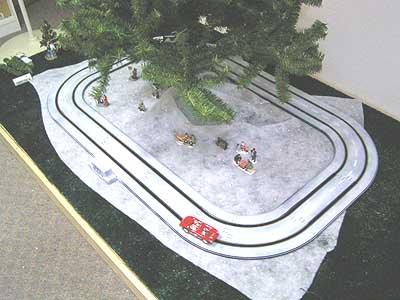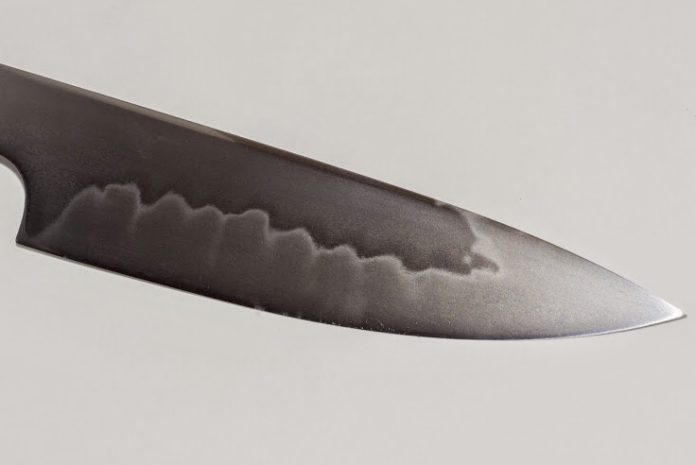
My Mother gave me this Santa that she gave to my Dad 30 or so years ago, he was a glassblower for 45 years.

If you are always curious about something, the metallography of Samurai is fascinating. Doing some crazy stuff considering the technology of 800+ years ago. Quenched in virgin's urine (modern day salt quench). Line five prisoners up front to back and shish kabob them with the hot blade, letting it cool internally? Wrap hard steel over soft? Look at the line of grey to silver,the Hamon Line, that one is called clouds & rain. Overall the metal is folded over 400 times, very fine grain structure!


In reply to 914Driver :
I saw a TV segment about an American smith who was learning how to forge steel in the Japanese way. His swords kept coming out below par even though his technique was perfect.
Turned out he was skipping the prayers that were written into the instructions. Those were put there to give the steel proper time to relax and anneal between steps in the process.
[edit] Seeing the northern lights is on my bucket list.
I thought the whole thing with Japanese sword making, and the years of practice a person needed to become proficient in their use, was because they did not have access to any decent ores, so they had to improvise with variable metallurgy like coating the blade with different thicknesses of clay to control how quickly it cooled, and then spend years training people how to use the sword without shattering it because in the end it's still amazingly brittle except if used exactly the right way.
Do not get me wrong, it is mind boggling what knowledge and technique there is involved. All the same, you could probably whip up a better sword in a day or two with an old truck spring. Not nearly as romantic ![]()

One of my favorite photos. I know jack-all about sail boats, but I do know the amount of precision and skill it took to get to this moment in time was amazing.
Pete. (l33t FS) said:I thought the whole thing with Japanese sword making, and the years of practice a person needed to become proficient in their use, was because they did not have access to any decent ores, so they had to improvise with variable metallurgy like coating the blade with different thicknesses of clay to control how quickly it cooled, and then spend years training people how to use the sword without shattering it because in the end it's still amazingly brittle except if used exactly the right way.
Do not get me wrong, it is mind boggling what knowledge and technique there is involved. All the same, you could probably whip up a better sword in a day or two with an old truck spring. Not nearly as romantic
Unlike crucible steel (wootz) which took years to figure out and is not the same thing as pattern welded steel.
You'll need to log in to post.